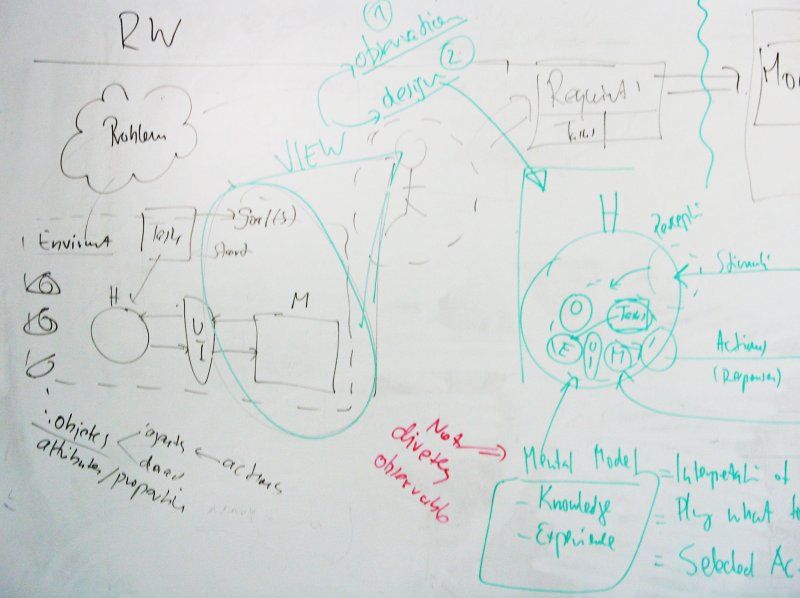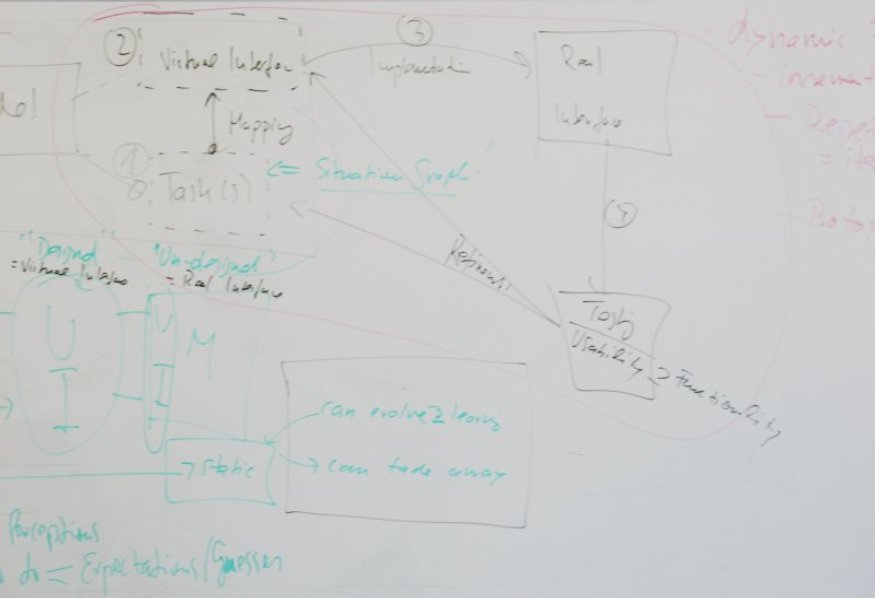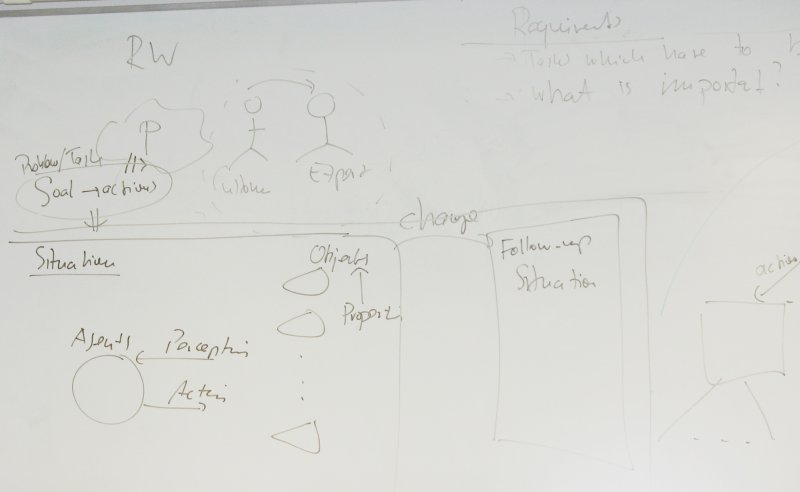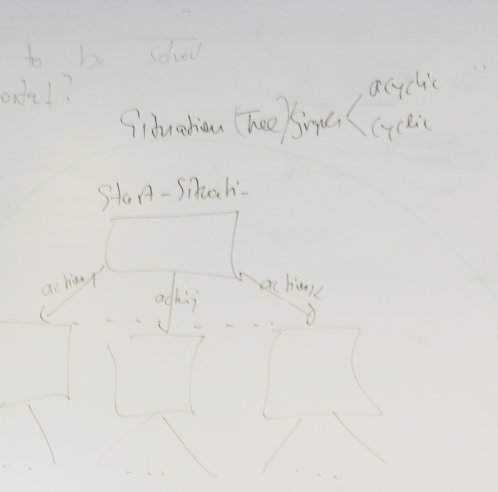
HIS-HMI WS05
|
Design View
Introduction
The design view is different compared to the observation view. The
HMI-Experts are looking to the realworld problems not to
'measure' some 'properties' of human machine interactions but to
'model' those properties which are important for human machine
interactions (look for the following to the whiteboard sketches below)
 |
 |
| Figure:
Whiteboard-figures related to the topic design view |
The main question here is, what are those properties which are
necessary for modeling?
Within the real world, the domain of possible
applications is
primarily characterized either as objects which are agents
which can
act or objects which are not agents. Furthermore can
objects have
different kinds of properties/ attributes.
An additional property of humanlike agents is the hyothesis
that they posses internally 'mental models'. These mental models
can
not directly be observed, but assuming these mental models is very
useful in the explanation of the observable behaviour of these agents.
The mental models are functional effectiv for the interpretation
of
the perceptions, for the planning and for the concrete actions.
Mental
models are no static entities. They are highly dynamic: they evolve
during time and they can fade away. The development depends
from many
factors. To some extend one can call this evolvement learning and
forgetting.
Thus it makes sense to incorporate these concepts (objects,
properties, agents, actions, mental model....) into that kind of
modeling which is characteristic for human machine interaction.
It can furthermore be assumed that all those aspects of the real
world, which are important for the actions of an agent (e.g. relevant
objects and their properties, other agents, possible actions ...),
are somehow represented in the mental model. If this is not the
case, then conflicts arise which challenge the agent to adapt his
mental model. There is no guarantee that he can do this.
The main goal of an HMI-Expert is the construction of an
user-interface (UI) for a technical system which has to
serve
some users
(H) such, that they can solve some defined tasks (T) with
the
aid of this
interface. To distinguish between the 'given' user interface of a
technical system and the 'consciously designed' user interface we will
speak of 'designed user interfaces' (DUI) and the 'bare
machine'
(BM). The bare machine represents a collection of possible
interactions with a technical system (M) 'as it is'. The
designed user
interface is the result of a consciously designed process which
establishes an artificial interface based on the poor interface.
The designed user interface can be an audio interface, a
graphical interface, a haptic interface etc. or a multimodal interface
combining different modes of perceptions and actions.
But to know, which properties are needed for a designed user
interface, one has to model the tasks which a user should solve with
the aid of this interface. Thus after the completion of the
description of the requirements for some kind of an HMI-problem,
the
HMI-Expert has to model all the tasks which are induced by
this
requirements description.
 |
 |
| Figure: Task
graph |
Modeling a task can be done in many different ways. One way is to
look at a task as a set of possible sequences starting
with a certain situation as the 'Beginning' and then generate
possible sequences of situations by doing some actions. Every action
does change a situation. Thus a task graph can be seen as a
formal model of a task with at least one start situation and at least
one goal situation. Tasks graphs can by acyclic or cyclic.
The number of involved objects as well as the length of the necessary
sequences can be a measure of the complexity of the task.
Additional one can model the necessary mental model of the human
agent as part of such a situation.